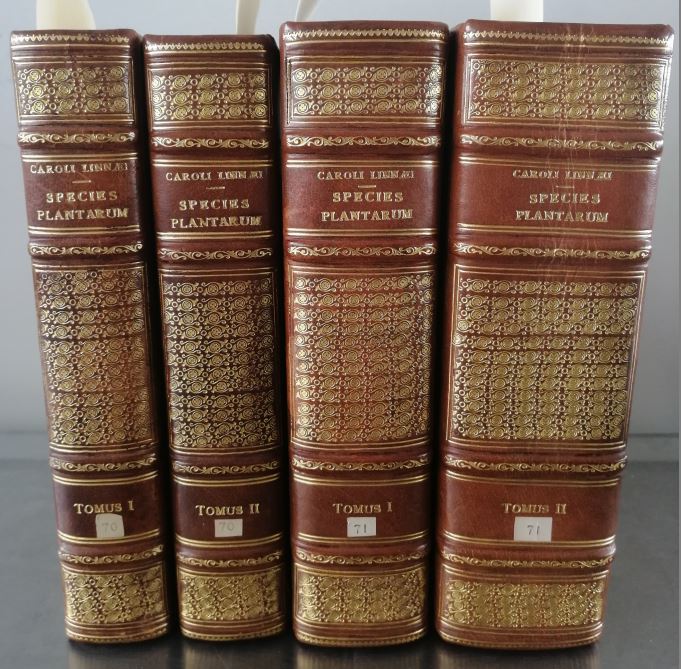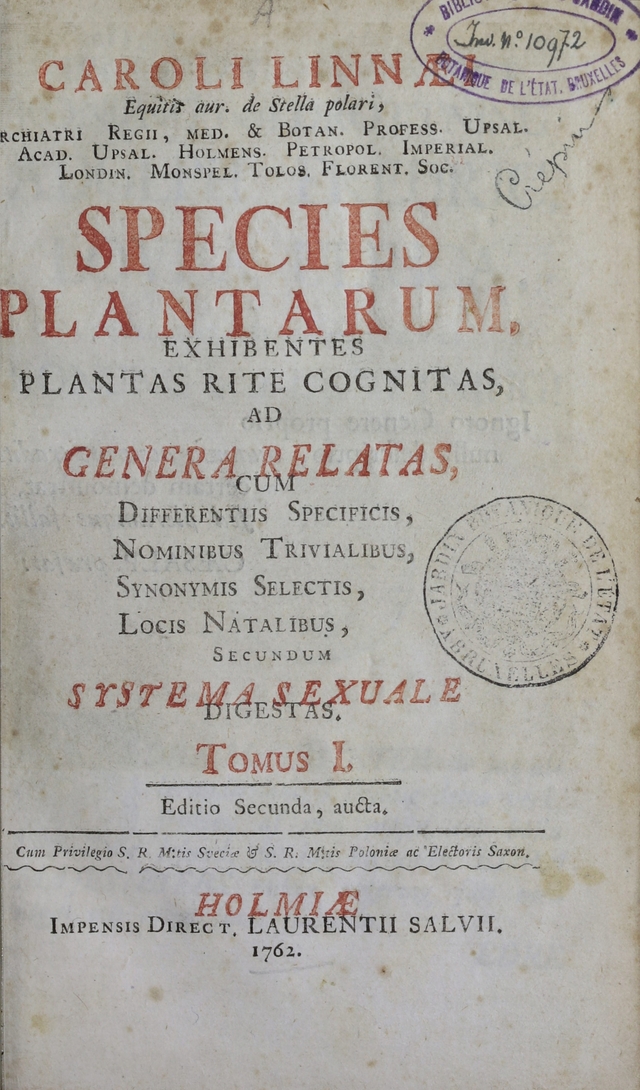
[Science News] - Linnaeus' Species Plantarum at the Meise Botanic Garden: 270 years of botanical nomenclature
 In celebration of the 270th anniversary of the publication of Species Plantarum by the renowned Swedish botanist Carl Linnaeus, originally published in Stockholm in 1753, numerous institutions have collaborated to emphasize this significant milestone in botanical taxonomy. These institutions have undertaken the task of gathering and documenting copies of this seminal work from their respective libraries. Meise Botanic Garden enthusiastically participated in this commemorative project.
In celebration of the 270th anniversary of the publication of Species Plantarum by the renowned Swedish botanist Carl Linnaeus, originally published in Stockholm in 1753, numerous institutions have collaborated to emphasize this significant milestone in botanical taxonomy. These institutions have undertaken the task of gathering and documenting copies of this seminal work from their respective libraries. Meise Botanic Garden enthusiastically participated in this commemorative project.
The primary objective of Species Plantarum was to compile a comprehensive catalog of the known plant species and organize them according to a system established by Linnaeus himself. This system relied on the count and arrangement of the observable sexual organs, namely stamens and pistils.
Notably, Species Plantarum marked a groundbreaking development by systematically applying binomial names to species. This system consisted of two parts, with the first part denoting the genus and the second specifying the species. For instance, it introduced the name Papaver rhoeas for the poppy. Before Linnaeus introduced this standardized naming convention, the same plant bore a multitude of names, often lengthy and differing significantly based on the author's scientific tradition, background, or training. Albrecht Haller, for example, referred to it as "Papaver foliis pinnatifidis hispidis, fructu ovato," while Gaspard Bauhin called it "Papaver erraticum minus." This binomial nomenclature has since proven indispensable for the organization, management, and exchange of knowledge about plants.

The anniversary of the publication of Species Plantarum provided a unique opportunity to compile a comprehensive inventory of the various editions held by the Meise Botanic Garden's library. Remarkably, our library houses the first four editions of Species Plantarum, each with its own historical provenance:
The first edition (Stockholm, 1753) originates from the collection of Barthélemy Dumortier (1797-1878), who acquired it in 1868 at the auction of Benoni Verhelst, an art collector from Ghent. Dumortier, a Belgian botanist and statesman, played a pivotal role in establishing the State Botanical Garden in Brussels in 1870. A devoted admirer of Linnaeus's work, Dumortier initiated his collection of Linnaeus's publications in 1818, steadily expanding it throughout his lifetime.
 The second edition (Stockholm, 1762-1763) is associated with François Crépin (1830-1903), who likely acquired it at the same auction as Dumortier. Between 1876 and 1901, François Crépin served as a prominent director of the State Botanical Garden in Brussels, the precursor to Meise Botanic Garden. Throughout the 19th century, this edition held greater importance than the first as it underwent revisions, enlargements, and remained more up-to-date. Many botanists relied on it as a reference for plant descriptions and illustrated plates.
The second edition (Stockholm, 1762-1763) is associated with François Crépin (1830-1903), who likely acquired it at the same auction as Dumortier. Between 1876 and 1901, François Crépin served as a prominent director of the State Botanical Garden in Brussels, the precursor to Meise Botanic Garden. Throughout the 19th century, this edition held greater importance than the first as it underwent revisions, enlargements, and remained more up-to-date. Many botanists relied on it as a reference for plant descriptions and illustrated plates.
The third edition (Vienna, 1764) came from the library of the Société royale d'horticulture de Belgique, the precursor to the Jardin botanique de l'État in Brussels.
Finally, the fourth edition (Berlin, 1797-1825), like the first, was originally part of the Barthélémy Dumortier collection.
As the seminal source for the binomial naming of plants, Species Plantarum remains an invaluable resource for contemporary botanists and scientists, continuing to shape their work today.
For more information: https://www.linnean.org/news/2023/09/06/species-plantarum-at-270



